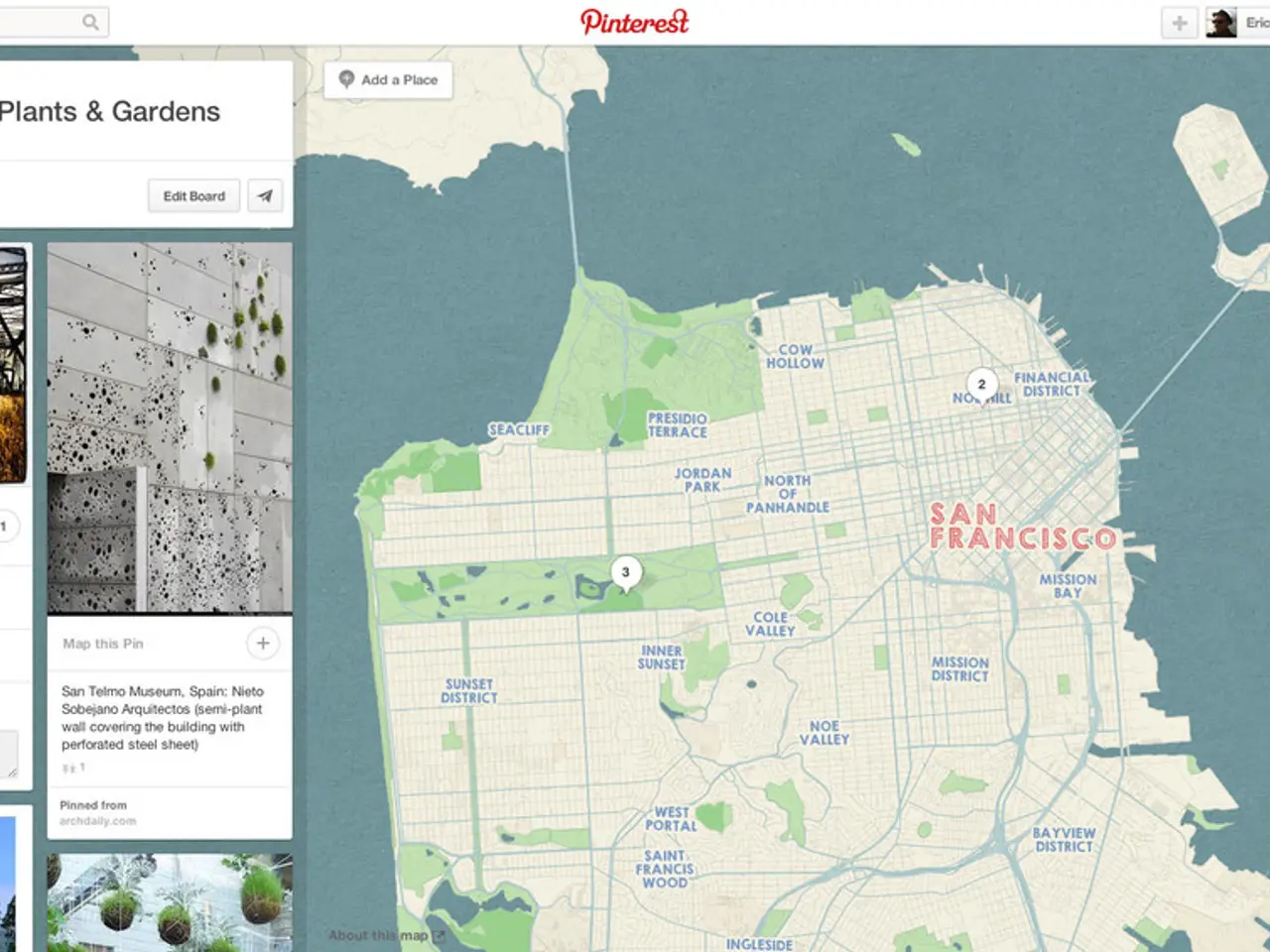Ancient, Valuable Map Places China as the World's Centerpoint, Valued at a Million Dollars
In the year 1602, the Wanli Emperor of the Ming dynasty commissioned a monumental map, known as the Kunyu Wanguo Quantu. This map, a collaboration between Italian Jesuit missionary Matteo Ricci and Chinese scholar Li Zhizao, was a transformative moment in Chinese cartography.
Ricci, a skilled mathematician and cartographer, created the map collaboratively, blending European geographical knowledge with Chinese cultural perspectives. Unlike traditional European-centered maps, Ricci shifted the prime meridian to the Pacific Ocean, placing China centrally on the map. This radical concept was more palatable to the Chinese court and intellectuals, who traditionally saw China as the world’s center, aligning with the Chinese self-perception as the "Middle Kingdom."
The map, printed on six panels of fine mulberry paper and designed to be mounted on a folding screen, was a key part of Ricci's strategy to convert the emperor and the scholar-officials first. It not only expanded Chinese awareness of distant continents, including America, but also embodied a cultural and diplomatic strategy that helped Ricci build credibility with the Chinese elite.
The map depicted a spherical world with stunning accuracy for its time, showing places like Wādemálá (Guatemala), Yǔgétáng (Yucatan), and Zhīlǐ (Chile). It even mentioned a mountain range in Bolivia called Potosí, which was the site of vast Spanish silver mines. The map was significant for defining Sino-Western relations for centuries, popularizing the term Dàxīyáng (大西洋), or "Great Western Ocean," as the Chinese name for the Atlantic.
In 2009, one of the best-preserved original copies of the Kunyu Wanguo Quantu was purchased for $1 million, reflecting its rarity and historical significance. Today, the map is housed in various institutions, including the Vatican, several universities in Japan, and a private collection in Paris.
Despite its popularity, the Kunyu Wanguo Quantu did not convince many Chinese to turn to Christianity. However, it laid groundwork for deeper scientific and cultural exchanges between China and the West, embodying early globalization in science and cartography as a product of collaboration between European and Chinese knowledge systems and bridging Eastern and Western perspectives.
[1] J. F. Heagerty, The Map of the World: Cartography in the Age of Discovery, 2013. [2] J. O'Malley, The First Jesuit in China: Matteo Ricci, 1552-1610, 1984. [3] M. Elvin, The Pattern of the Chinese Past, 1973.
- The Kunyu Wanguo Quantu, a substantial collaborative work between Matteo Ricci and Li Zhizao in 1602, was a pivotal moment in the evolution of Chinese cartography.
- This map, an amalgamation of European geographical discoveries and Chinese cultural research, presented a spherical world with remarkable accuracy for its time.
- By shifting the prime meridian to the Pacific Ocean, the map situated China centrally, reflecting the Chinese self-perception as the "Middle Kingdom."
- As a key component of Ricci's strategy to influence the Chinese emperor and intellectuals, the map introduced distant continents like America and fostered deeper scientific and cultural exchanges between China and the West.
- In the realm of education-and-self-development, the map signified early tech advancements in the fields of astronomy, biology, and technology, bridging Eastern and Western perspectives and embodying early globalization in science and cartography.
- Today, this historical artifact is housed in institutions like the Vatican, Japanese universities, and a private collection in Paris, serving as a testament to the transformative power of collaboration in the realm of science.




